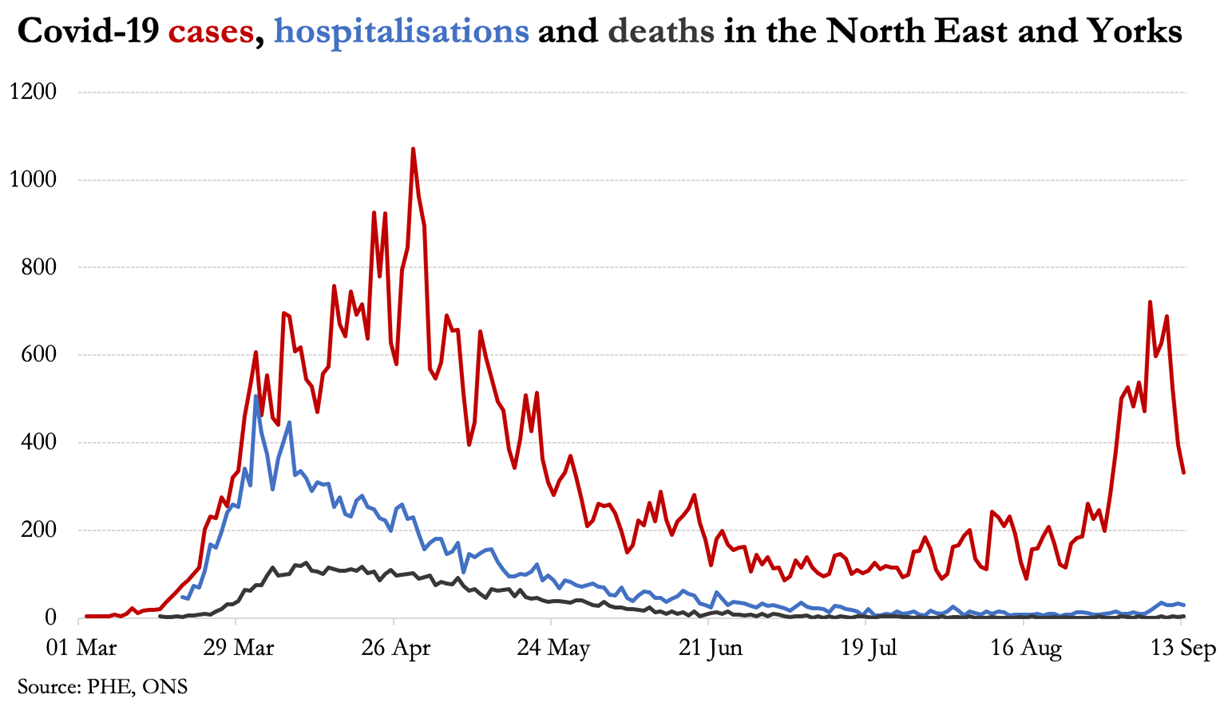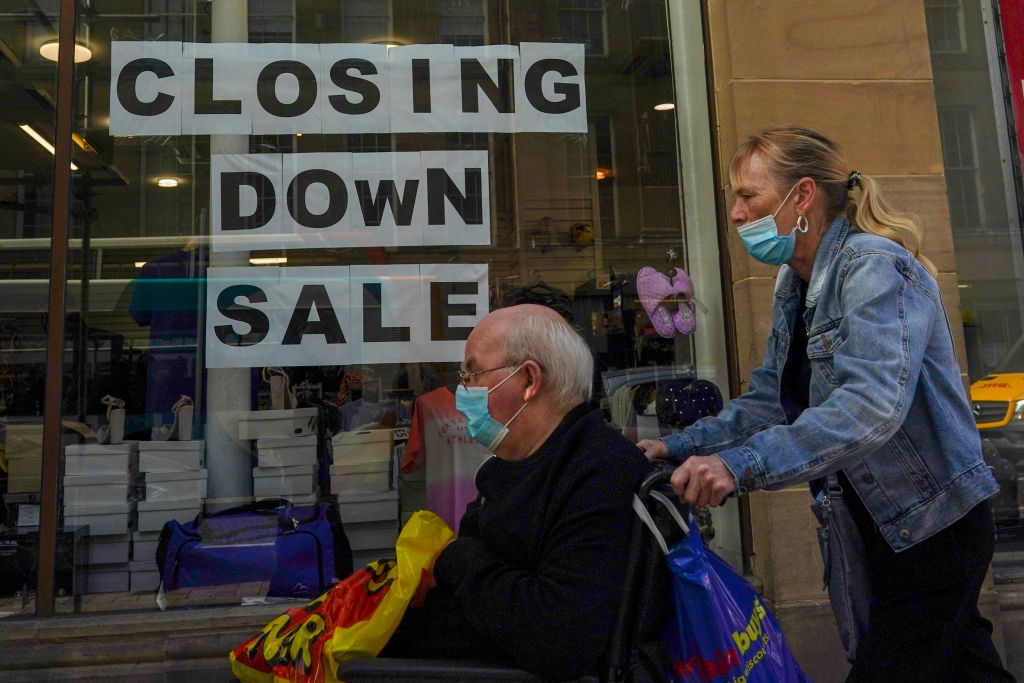One in seven Britons is now under increased lockdown restrictions, after a return of measures in the north-east added an additional two million people to the list. Those in Northumberland, Newcastle, Sunderland, North and South Tyneside, Gateshead and County Durham will not be able to mix with other households (outside of support bubbles) from midnight, while restaurants, bars and pubs will be subject to a 10 p.m. curfew. Health Secretary Matt Hancock announced the latest lockdown measures in the House of Commons this morning, citing a rise of Covid-19 cases in the area.
Despite more than ten million people in the UK now being subject to some level of increased restrictions, the official metrics for deciding whether an area will be put into lockdown has not been published. Yet today’s announcement suggests again that the government is basing its decisions on case numbers, rather than hospitalisations or deaths.

In the North East and Yorkshire, the number of patients in hospital with Covid-19 has stayed relatively low. An increase of 83 in the past week can be seen as cases have also risen. Deaths have yet to increase in the regions.
Of course, both hospitalisations and deaths are bound to lag behind infections, with the average time between infection and death at the peak of the virus estimated to be 20 days. Based on this logic, one would expect to see an uptick in the coming weeks. But there are several reasons to think Covid-19 deaths may not follow the same trajectory this time, including a possible increased immunity and better knowledge of how to treat the virus using anti-inflammatories rather than ventilators. All eyes will be on this graph in the coming weeks.







Comments